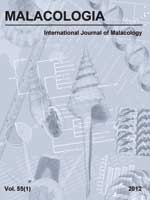We studied snail assemblages at 39 plots in hay meadows of the White Carpathians, Czech Republic. We recorded snails quantitatively in 1 m2 quadrats, along with vegetation and several measured variables in the same plots in order to investigate the influence of selected environmental factors on meadow snail species composition and richness. The study aimed to determine the extent to which it is possible to use vegetation as a predictor of land snail composition by comparing the predictive power of three groups of variables: (i) measured variables and climatic factors, (ii) vegetation, and (iii) Ellenberg indicator values for plants estimated from plant composition.
Detrended correspondence analysis revealed that both snail and plant assemblages were strongly affected by the main environmental gradient running from calcium-poor, wet and cool upland sites to calcium-rich, dry and warm lowland sites. The main changes of vegetation and snail species composition were highly correlated (rs = 0.77, p < 0.001). Soil calcium content and moisture were the most important factors, which explained most of the variation both in the snail and plant assemblages. The interaction of these two factors was even stronger but it was not possible to separate the influence of particular variables on snail species composition and to determine which of these variables made the greatest contribution to the observed pattern. Using the variance partitioning approach, we found that most variation in snail species data was jointly explained by all three groups of variables (i.e., measured variables and climatic factors, vegetation, and Ellenberg indicator values for plants). Even so, the net effects of both vegetation and measured variables were significant. This indicates that vegetation could describe important environmental controls of land snail distribution, even those that are difficult or even impossible to measure directly. We conclude that vegetation composition can be very useful predictor in snail community ecology studies.





